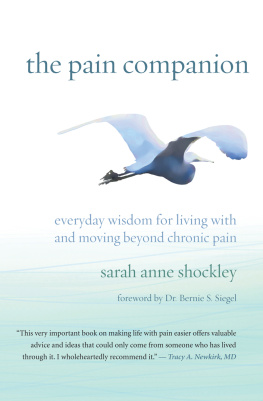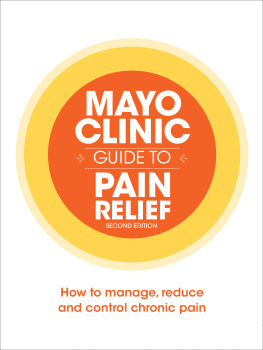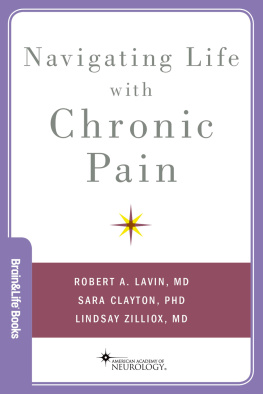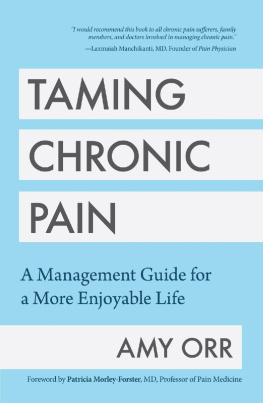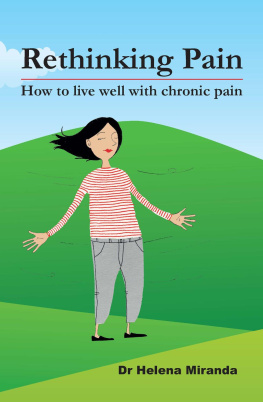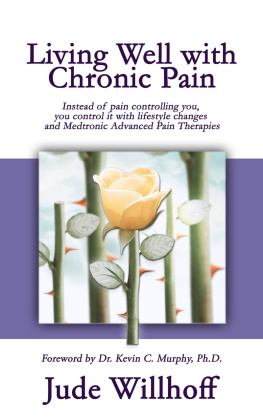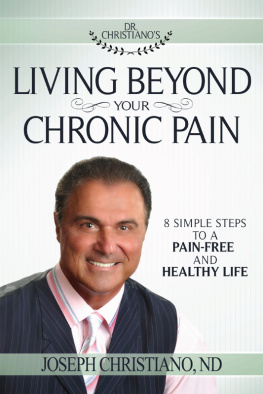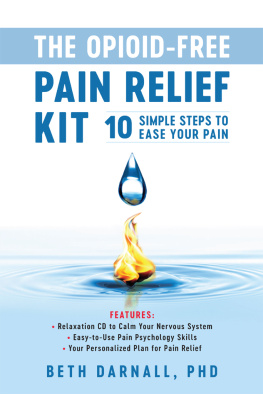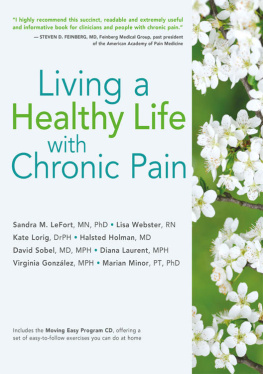Sarah Anne Shockley has lived with debilitating nerve pain since the fall of 2007. Because her condition was unresponsive to existing traditional or alternative therapies, she developed a unique method of pain management and pain reduction not reliant on pharmaceuticals or medical intervention. A former university instructor, she holds an MBA in international marketing, and she is an award-winning filmmaker whose work includes the highly acclaimed documentary on disabled dance, Dancing from the Inside Out. She is a Master Practitioner of Transformational Neurolinguistic Programming (TNLP), a highly effective methodology for releasing long-term emotional and physical pain. She lives in the San Francisco Bay Area.
Please visit the author at www.thepaincompanion.com.
In the fall of 2007, I developed thoracic outlet syndrome (TOS) due to prolonged computer use in a nonergonomic office setup. Simply put, the area between my collarbones and first ribs collapsed, severely compressing the space to less than 20 percent of its normal width on both sides of my body.
This compression was excruciating, squeezing a major artery, veins, nerve ganglia, and the large scalene muscles running down from the neck to the first ribs, all of which must fit through this relatively small space.
This caused intense burning sensations in my neck; deep aches in my palms, wrists, and neck; and shooting pains in my neck and forearms. A continuous migraine headache often flared alarmingly, setting the right side of my brain on fire. I had flu-like dizziness, weakness, fatigue, and loss of mobility and functionality in my arms and hands.
Anything that required me to use my arms away from my body, even the smallest lifting, pushing, pulling, reaching, grasping, or carrying caused a sharp spike in pain levels. I could barely turn or tilt my neck to either side, up, or down, and I had to move my whole body slowly and carefully to look at someone next to me. I walked extremely slowly, leaning forward, like a very ancient person in bad shape.
In an effort to restore myself to health, I tried numerous approaches to healing, both traditional and alternative. Although some of them brought temporary relief, none actually healed the TOS, and the majority of them immediately made things worse by further irritating the nerves and tissues. After I tried a new approach, it usually took a number of days, and sometimes weeks, for the flare-up to calm down and the irritated nerves and swollen tissues to return to a more stable state.
Pharmaceuticals were also unsuccessful in relieving the nerve pain or aiding my overall condition. Instead, they created disagreeable side effects that added to the mlange of unpleasant symptoms already affecting most of my body, so I quickly stopped using them.
Since I couldnt dull the pain, I dulled myself instead and withdrew, becoming very still and quiet. It hurt to breathe deeply, so I sat propped up with pillows, my hands turned up and open, trying to breathe as lightly as possible and waiting for deliverance. If I waited long enough, I reasoned, the pain would go away and my body would receive the healing it needed through my careful stillness.
By the fall of 2008, I had been in intense, unceasing, and debilitating pain for the better part of a year, and I was not making any appreciable headway toward healing through either traditional or alternative methods. I felt as if Id embarked on a nightmarish ocean liner heading out into dark and rough waters on a voyage with no predetermined destination and no way to disembark.
At first, I had thought everything was about to get better, and I would simply rejoin my life where Id left off. It was an excursion I hadnt desired or asked for, but at least it would soon be over and I would carry on with life as usual. Every other malady Id suffered had always ended. I had always healed before. Always.
But thats not what happened.
Many months passed before I fully understood the extent of my injuries. After an MRI scan and a series of diagnostics, my neurologist carefully explained that the extent of my TOS was unusually severe. Sadly, he informed me that I couldnt expect to heal anytime soon, if at all, and in fact, the condition was often progressive; it could steadily get worse.
In a two-hour consultation, a leading thoracic surgeon went over my status with me comprehensively, explaining that there really wasnt anything he could offer except a surgery of dubious merit in which my top two ribs would be removed. The recovery period would be very painful and protracted. And for me, it wouldnt be a permanent solution; I could expect my TOS to return.
These prognoses landed like dead weights. I had to come to terms with the fact that I would most probably not be returning to work or my normal activities. Ever. Along with living in pain, I realized that I was going to have to deal with the stress of making do with very reduced financial circumstances over a long period of time, as well as the ongoing sadness and distress of having had my normal, active life disappear, virtually overnight.
With the understanding that I was going to be physically impaired and in pain for a very long time, most likely the rest of my life, I entered a period of intense emotional challenge. My usual positive attitude faltered, and I began to experience decreased well-being and a constant barrage of worries about the future. I woke each day in the same dark state of mind, my body in extreme pain, and the condition of my life feeling the same, the same, the same, bleak morning after bleak morning.
Before my injury, I had considered myself resourceful, positive, intelligent, and capable. I certainly didnt expect others to figure things out for me. My inability to restore my body to health, therefore, was a source of deep frustration. Virtually everything I was doing to heal myself was leading nowhere constructive and often made things worse. What was I missing? What was I doing wrong?

Dear Pain,
You have become such a forceful presence; it is almost like living with another person. My whole life has been hijacked by you. Other people say you come and go. You give them breaks for hours or days or even weeks, but youve decided to keep me company every single minute of every single day.
I realize now that the twinges and aches I felt at first were only your early scouts. Now youre here in full force pressing, insistent, nasty, intense. You are unstoppable and all-pervasive. And you stay and stay and stay.
Why have you decided to stick with me so relentlessly, so adamantly, and with such passionate dedication?

When we experience severe pain, constant pain, insistent pain, the situation quickly becomes overwhelming. So much of our attention and energy is directed toward dealing with the pain that we can feel submerged underneath its demands.
The choices that have to be made, the responsibilities we still have despite a physical impairment, and the sensations of pain themselves seem to be drowning us. It becomes difficult to think clearly, to have conversations, to be available for life, to be available to the self.
Pain, therefore, rules our experience. It dictates how we can and cant use our bodies. We do only as much as it allows us to do. We sleep only as much as it allows us to sleep. When it has something to say, we are its captive audience. We interact with others with less enthusiasm and less energy. We become worn-out and discouraged, completely at the mercy of its whims.
Pain becomes our primary focus. That is its nature. Its presence is all-encompassing. When pain is either very severe or very long-lived, it can feel like a separate entity, a being with its own mind.
Next page
